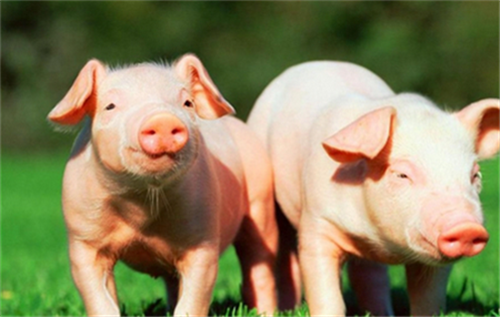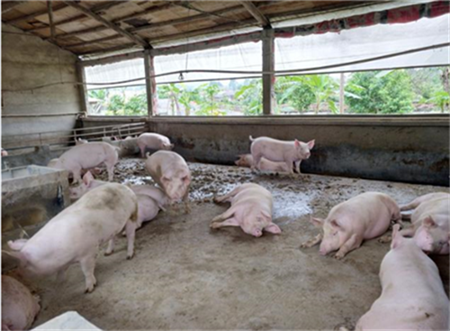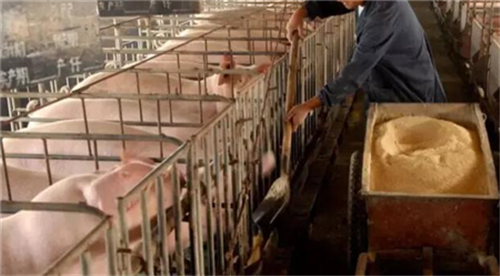Clinical diagnosis and treatment of common reproductive disorders in small and medium-sized pig farms (1)
Clinical diagnosis and prevention of common reproductive disorders in small and medium-sized pig farms
Abstract: in recent years, with the increase of breeding quantity and the frequent circulation of livestock products, there are more and more diseases of pigs, and the harm is becoming more and more serious, especially the disease of reproductive disorders of pigs, which has become the main reason restricting the production of pigs. Especially in small and medium-sized pig farms, pig reproductive disorders are common, and the clinical manifestations are different, which seriously affect the sustained and healthy development of the pig industry. In this paper, the common and seriously harmful swine reproductive disorders in small and medium-sized pig farms were analyzed, the main points of clinical diagnosis were summarized, and the effective prevention and control measures were discussed.

Key words: pig; reproductive disorder; clinical diagnosis; prevention and treatment
1 main characteristics and etiology of reproductive disorders in pigs
Pig reproductive disorders are mainly characterized by abortion, stillbirth, mummified fetus, inactive weak offspring, deformed babies, young offspring, boar infertility and sow infertility in pregnant pigs. Breeding pigs with one or more of the above clinical manifestations can be considered to have reproductive disorders.
There are many causes of reproductive disorders in pigs, which are mainly divided into infectious factors and non-infectious factors. Infectious factors include viral diseases, bacterial diseases and parasitic diseases, while non-infectious factors include hypoplasia, malnutrition, poisoning, stress, poor feeding and management, unreasonable reproductive system (such as excessive selfing) and so on. In the large-scale breeding mode, the reproductive disorders of pigs caused by non-infectious factors are relatively less, most of them are caused by infectious factors, and the harm is more serious, and the prevention and control is more difficult.
2 Clinical diagnosis of common reproductive disorders in pigs
2.1 Porcine reproductive and respiratory syndrome
Mainly seen in sows with gestation period of more than 100 days, sows have a large number of miscarriages or premature delivery, giving birth to stillbirths, weak fetuses or mummified fetuses, most sows have varying degrees of respiratory symptoms such as sneezing and coughing, and some sows may have a slightly higher body temperature. but there is usually no high fever. Severe cases may have depression, dyspnea, cyanosis in the ears, edema at the extremities and ventral side, pudendal swelling and so on.
The virus mainly invades the lungs, pulmonary edema, hemorrhage, congestion, focal or even diffuse yellowish-brown or brown consolidation dominated by cardiac and apical lobes, cardiac enlargement, myocardial hemorrhage and necrosis, severe myocardial softening, uneven liver tone, mild congestion, a small amount of speckled hemorrhage on the surface, splenomegaly and purple hemorrhagic foci; fragile texture of the kidney, with a large amount of punctate hemorrhage on the surface. Enlarged lymph nodes; tonsil bleeding and suppuration.
2.2 Porcine pseudorabies
Pregnant sows infected with the disease showed miscarriage, stillbirth and mummified fetus; piglets showed high fever, loss of appetite, dyspnea, and then died of mental symptoms. Within 15 days of age, the mortality rate of piglets was 100%, and that of weaned piglets was 10%-20%. After the shelf pigs were infected, the symptoms were mild, fever and cough 3d~4d recovered; the adult pigs only showed slow weight gain and no obvious symptoms.
- Prev

What are the key points of controlling the epidemic in pig farms at present?
What are the key points of controlling the epidemic in pig farms at present?
- Next

Clinical diagnosis and treatment of common reproductive disorders in small and medium-sized pig farms (2)
Clinical diagnosis and treatment of common reproductive disorders in small and medium-sized pig farms (2)
Related
- On the eggshell is a badge full of pride. British Poultry Egg Market and Consumer observation
- British study: 72% of Britons are willing to buy native eggs raised by insects
- Guidelines for friendly egg production revised the increase of space in chicken sheds can not be forced to change feathers and lay eggs.
- Risk of delay in customs clearance Australia suspends lobster exports to China
- Pig semen-the Vector of virus Transmission (4)
- Pig semen-the Vector of virus Transmission (3)
- Five common causes of difficult control of classical swine fever in clinic and their countermeasures
- Foot-and-mouth disease is the most effective way to prevent it!
- PED is the number one killer of piglets and has to be guarded against in autumn and winter.
- What is "yellow fat pig"? Have you ever heard the pig collector talk about "yellow fat pig"?

